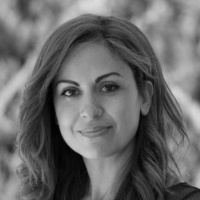As an academic, practitioners want to understand my knowledge, and I want to understand their experience. Combining knowledge and experience can only promote the cause of peace through sport. However, many times it’s like two different worlds—one of practitioners and one of academics. We speak different languages. For the sake of peace through sport, we must bridge this gap, and we can.
Roles and Responsibilities of Academics
My starting point is this: there is no reason for academia to exist if the research does not apply in practice. It would be a failure if theory was not put into practice, especially in my studies related to sport, politics, sociology, sport diplomacy, and Olympic studies.
To start, academics can take part in events and conferences that bring together and reinforce cooperation between different constituencies to meet with people from government, NGOs, athletes, even parents and coaches and learn what is happening outside academia. This will lead to several connections and opportunities.
One example is program evaluation and monitoring. We always need to evaluate the impact of a program, and academics can contribute to this. Many times, especially in peace and sport projects and funded projects, evaluations involve interdependent relationships between the donor and the recipient. An independent voice from academia could help bring light to a project and its impacts, so an academic may be best for evaluation rather than the donors in order to secure a more independent opinion, transparency, and accountability.
Academics also have the responsibility to achieve outreach to non-academic audiences. We need to write blogs, newsletters, non-academic materials that maybe don’t count so much toward our own career development in a sense, but definitely help practitioners. For example, some projects for peace through sport in developing countries face issues with potential to cause harm to local communities.
There is so much research in this area that can help inform interventions to consider local values and ownership. If these papers are translated into simple tips and strategies, it would create a very useful link between academics and practitioners.
Roles and Responsibilities of Practitioners
Practitioners should know that we academics are also normal people with much to offer them! They should seek opportunities for links and partnerships with nearby universities. I experienced this most in the lead up to the London 2012 Games. We had partnerships with practitioners, and they reached out to us. Of course there was a catalyst, the Olympic Games, and practitioners need to recognize such catalysts.
When practitioners do field projects and activities related to peace and sport, they should try to seek out what kind of expertise exists in their local community and ask for support, collaboration, and synergies. They should also recognize that universities have great resources of human capital. Students can be volunteers, and academics can provide needed support.
Personal Examples of Bridging the Gap
When I was doing my Marie Curie Intra-European Fellowship in Panteion University in Athens, Urban Dig was only coming into form (www.urbandigproject.org). They were trying to promote cultural and social capital in an immigrant neighborhood in Athens. I gave them ideas, introduced them to people from the sports industry, and expanded their network. We developed actions and invited academics from the U.K. to run practical workshops developed from theory. It started from a methodology called Glossopoly, which is about using Monopoly, the board game, for engaging local communities to resolve a problem.
This was a community-based method from studies in geography. So with academics from the U.K. and practitioners from Athens we ran these workshops and played Dourgoutopoly, because the immigrant neighborhood is called Dourgouti. The community members found it very interesting, and so many community problems emerged from their discussion. We used this as a starting point to resolve local issues, and sport came up many times as part of the solution.
In time, residents and mayors used our work and research to identify needed policy changes. Also, Masters students involved in the work grew to love the immigrant neighborhood, and some moved into it, integrating and building bridges between different populations.
Additionally, I was the author of Imagine My Stories for Peace, a book with five stories, published by the International Olympic Truce Center, which disseminated the books to youth around the world. I informed the book’s stories from my understanding and academic knowledge of what peace means. They do workshops with these stories based on activity sheets, dramas, theater, dance, and other ideas I wrote for the book, and they use them at an annual international camp near Olympia.
They also plan to give these books to schools and refugee camps in Greece for workshops with Olympians. So again, this shows how academics can offer innovative, theory-informed ways for practitioners reaching out to youth for peace through sport.
A Place to Start
I think one of the best ways for academia and practitioners to come together is Peace and Sport International Forum. It brings together NGOs, government, athletes, academics, and more for dialogue and collaboration. Peace and Sport is an example of what the integration we need looks like. Academics want to offer our knowledge and expertise, and practitioners want to understand and collaborate with us, but often our two worlds are kept separate. We can change this.
Disclaimer: The views and opinions expressed in Peace and Sport Watch are those of the authors and do not necessarily represent the views of Peace and Sport.
